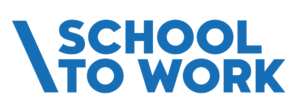Harrison’s Inclusive Success
2023 INLLEN School to Work Program Case Study 2
Inclusive Success: Nurturing Talent through Student Work Placements for Neurodivergent Young People
Introduction
This case study delves into the unique experience of a student with autism participating in a Structured Workplace Learning (SWL) placement, as part of the Inner Northern LLEN’s School to Work Program. It provides insights from both the employer and the student, shedding light on the effectiveness of the Program in fostering inclusivity and supporting the professional development of neurodivergent young people.
Context and Background
Harrison, a Year 12 autistic student at The Pavilion School, embarked on a transformative journey during his work placement at a local IT shop. His experience not only inspires the employer but also encourages other students to participate in SWL work placements.
Cnet Technology is a local IT service business located in Preston that started offering work placements in late 2019. The business provides customised first grade IT services for both home and business.
The Pavilion School is a Victorian Government School that seeks to provide the highest standard of public education for adolescents who have been disengaged or excluded from mainstream education.
Why does Cnet Technology offer SWL Placements?
Cnet Technology’s motivation was simple yet profound: to give students, including those with autism, a chance to experience the real working environment. They believe in providing young talents with a window into the practical aspects of their chosen field. This motivation goes beyond profit and productivity; it’s about opening doors and nurturing the next generation of professionals.
Why did Harrison choose to complete a SWL Placement?
Harrison, an enthusiastic IT student, chose a SWL placement to gain more exposure and hands-on experience in the IT field. His goal was to bridge the gap between what he learned in the classroom and what happened in the real world. Harrison was driven by a thirst for knowledge, a desire to learn from professionals, and a determination to face challenges head-on.
Gains from the Experience
Harrison’s journey began at a local IT shop, where he was exposed to the practicalities of the IT field. What he discovered was the beauty of diversity. Some students preferred focusing solely on specific tasks, while Harrison was eager to learn a wide range of responsibilities, from computer work to filing and stock checking. This diversity of talents and preferences became a source of learning for the employer, who came to appreciate and respect the various strengths that each student brings.
Harrison’s Personal Transformation
As the weeks passed, Harrison’s transformation became apparent. While he was initially perceived as shy, it became clear that he was not only confident but also highly competent in his work. His newfound comfort in the work environment allowed him to take on a range of technical tasks independently. This personal and professional growth was an inspirational journey that surprised everyone, showcasing the strengths and potential that lie within each student.
Expectations Exceeded
The employer’s expectations were simple—provide a safe and comfortable environment for the student and expose them to the real world. Harrison’s progress far exceeded these expectations, leaving them delighted with his performance and progress.
For Harrison, his placement was precisely what he had expected. It offered him the exposure and hands-on experience he had hoped for, enabling him to gain valuable skills and knowledge for the future. He had also paved the way for other neurodivergent young people.
Words of Wisdom for Employers and Students
For other employers considering offering work placements, the message is clear: “Give them a chance. You will find a hidden gem.” Cnet Technology also advised other employers to: “Keep your glass half full. Be open-minded about ideas and opportunities. Recognise and nurture the unique talents that neurodivergent young people bring to the workplace.” Harrison’s story exemplifies the unexpected value that all students can bring to an organisation when given the opportunity.
To fellow students, Harrison encourages all students to take the plunge, assuring them that “SWL isn’t as intimidating as it may seem.”
The Future
Cnet Technology’s vision and commitment to offering work placements remains unwavering. They are dedicated to providing a platform for students to grow and learn, thereby shaping the organisation and the future of these young professionals.
As Harrison’s story illustrates, work placements have the potential to be transformative. His experience offered him practical insights and a boost in confidence, setting the stage for future success.
Conclusion
This case study underscores the importance of inclusive practices in work placement programs and the valuable contributions neurodivergent young people can make to the workforce. It highlights the success of the School to Work Program in providing a supportive environment for professional growth and personal development, as well as emphasising the need for continued promotion of inclusive work placement opportunities for all young people.
This isn’t just a story; it’s an inspirational narrative of how SWL placements can create opportunities for transformation, positively impacting the lives of employers and students alike. It serves as a reminder that, by opening doors to all young talent, we can collectively shape a brighter future for all.





